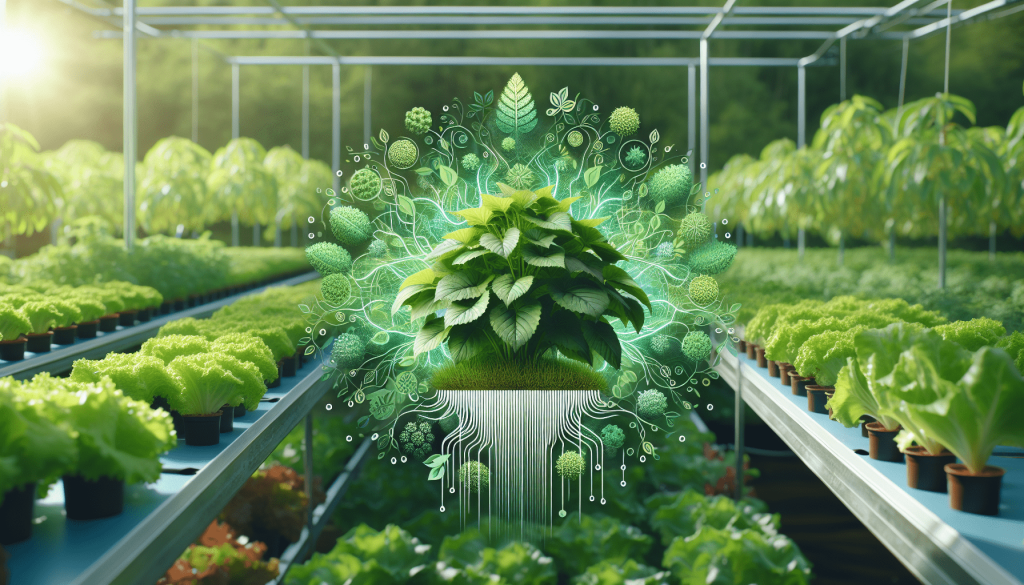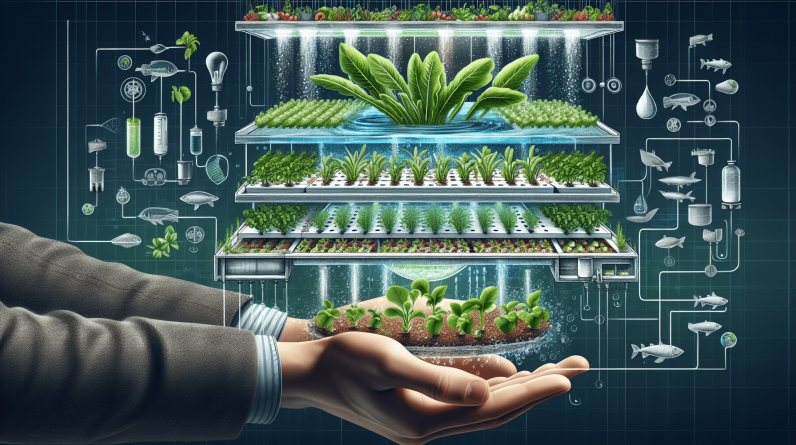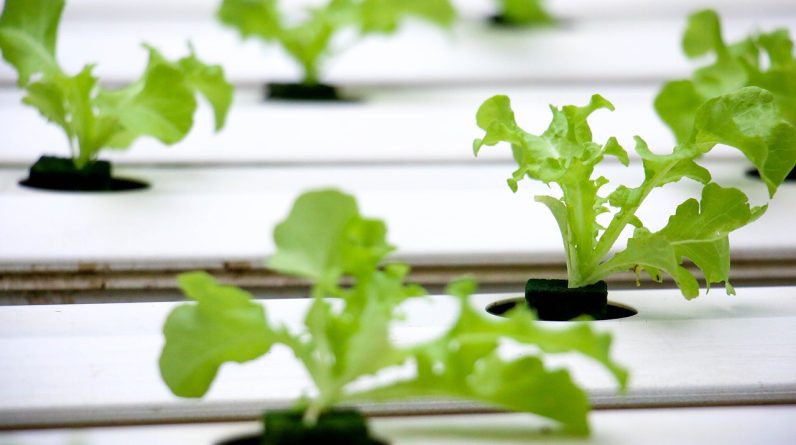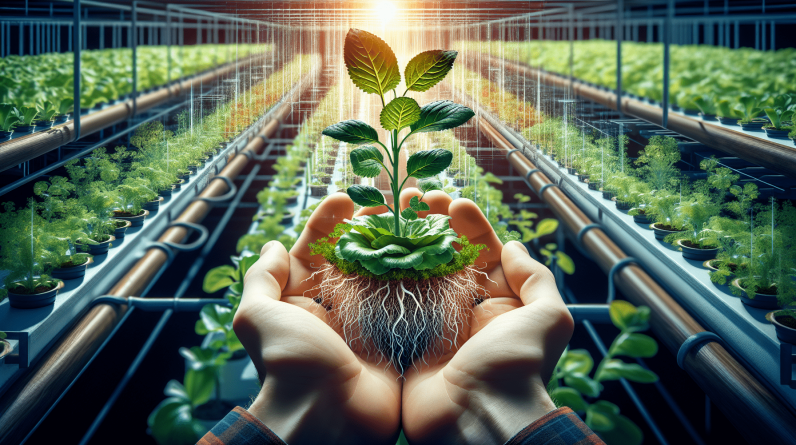
Hydroponic gardening, a method of growing plants without soil, has gained popularity in recent years for its numerous benefits. However, like any gardening technique, it is not without its challenges. In this article, we will explore some of the common problems encountered in hydroponic gardening and provide practical solutions to help you overcome them. Whether you are a beginner or an experienced hydroponic gardener, understanding these common issues and their solutions will ensure the success of your urban garden. So, let’s dive into the world of hydroponic gardening and discover how to tackle its common problems for a thriving and bountiful harvest.
Nutrient Issues
Over-fertilization
Over-fertilization is a common issue in hydroponic gardening that occurs when the plants receive an excessive amount of nutrients. This can lead to nutrient burn, where the roots become overwhelmed with salts and minerals. Signs of over-fertilization include yellowing or browning of leaves, stunted growth, and plant wilting. To solve this problem, it is important to closely follow the recommended nutrient dosage and frequency specified for your specific plants. If you notice signs of over-fertilization, flush the system with clean water to help remove the excess nutrients and restore balance to the root zone.
Under-fertilization
On the other hand, under-fertilization occurs when plants do not receive enough nutrients for healthy growth. This can result in pale or yellow leaves, slow growth, and overall weak plants. To address under-fertilization, regularly monitor nutrient levels in the hydroponic solution and adjust accordingly. Utilize a complete and balanced nutrient solution that provides all the necessary macronutrients (nitrogen, phosphorus, and potassium) as well as micronutrients for optimal plant development. It is important to note that different plant species have varying nutrient requirements, so be sure to research the specific needs of your plants.
Incorrect nutrient composition
Another nutrient-related problem is using an incorrect nutrient composition. Each plant species has specific nutrient requirements, and improper nutrient composition can lead to nutrient deficiencies or toxicities. Conduct thorough research on the nutrient requirements of your chosen plants and select a hydroponic nutrient solution that matches those needs. Additionally, periodic monitoring and adjustment of the nutrient solution’s pH and electrical conductivity (EC) levels are crucial to maintaining proper nutrient balance.
pH imbalance
Maintaining the correct pH level is essential for successful hydroponic gardening. pH levels that are too high or too low can lead to nutrient imbalances and hinder nutrient uptake by the plant roots. Most plants thrive in slightly acidic to neutral pH levels, typically ranging from 5.5 to 6.5. Regularly test the pH level of your hydroponic system using a pH meter or test kit, and make necessary adjustments using pH up or pH down solutions. This will ensure that your plants can effectively absorb the nutrients they need for healthy growth.
Water-related Problems
Watering frequency
Watering frequency plays a vital role in hydroponic gardening, as it directly affects the plant’s root zone and overall plant health. Overwatering or underwatering can both cause significant issues. Overwatering can lead to waterlogged roots, inadequate oxygen supply, and increased susceptibility to root diseases. Underwatering, on the other hand, can result in dehydrated plants, root desiccation, and stunted growth. To find the right watering frequency, closely monitor the moisture level of the grow medium and adjust accordingly. Remember that factors like humidity, temperature, and plant species can influence watering requirements.
Water quality
The quality of water used in hydroponic systems is crucial for plant health. Poor water quality can contain contaminants, heavy metals, or high levels of dissolved solids that can negatively impact the plants. It is recommended to use clean, filtered water or treated water to prevent any impurities from affecting the nutrient solution and the plant roots. Additionally, periodic testing of water pH, EC, and nutrient levels is recommended to ensure optimal plant growth and avoid potential issues related to water quality.
Algae growth
Algae growth is a common problem in hydroponic gardening, especially in systems exposed to sunlight. Algae can quickly multiply and cover the grow medium, blocking essential light and nutrients from reaching the plant roots. To prevent algae growth, it is important to minimize light exposure to the nutrient solution by using opaque containers or covering the system. Additionally, maintaining proper water circulation and cleanliness by periodically cleaning the system can help prevent algae buildup. If algae growth becomes significant, applying an algaecide specifically formulated for hydroponic systems can effectively control the problem.
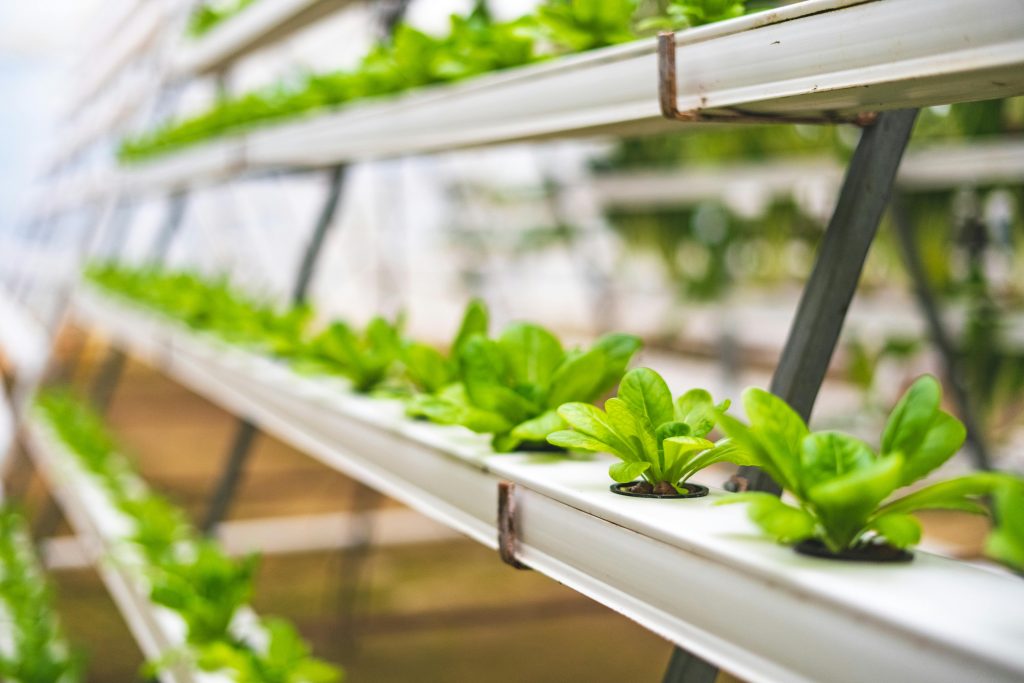
Temperature and Humidity Challenges
Temperature fluctuations
Temperature fluctuations can significantly impact the health and growth of plants in a hydroponic system. Extreme temperature swings can stress the plants, leading to wilting, slow growth, or even plant death. It is crucial to maintain a stable temperature range ideal for the specific plant species being grown. Factors such as seasonality, location, and the type of hydroponic system used can influence temperature control. Utilize tools like thermometers, heaters, and fans to regulate and maintain the desired temperature range, ensuring optimal conditions for plant growth.
Humidity control
Humidity levels also play a vital role in hydroponic gardening. High humidity can create a favorable environment for mold, mildew, and fungal diseases, while low humidity can lead to excessive moisture loss and dehydration in plants. It is important to strike a balance and maintain an optimal humidity level for your specific plant species. This can be achieved through proper ventilation, using humidifiers or dehumidifiers, and monitoring humidity levels with a hygrometer. Regularly check for signs of overly dry or overly damp conditions and adjust humidity levels accordingly to create the ideal environment for your plants.
Pest and Disease Management
Insect infestations
Insect infestations can quickly become a major issue in hydroponic gardening, as pests can easily invade and infest the closed environment of a hydroponic system. Common pests include aphids, spider mites, whiteflies, and thrips, among others. Inspect your plants regularly for signs of pest activity, such as visible insects, discolored or damaged leaves, or sticky residue. Implement integrated pest management strategies, such as introducing beneficial insects, using organic insecticides, or employing physical barriers, to control and prevent insect infestations in your hydroponic setup.
Fungal and bacterial diseases
Fungal and bacterial diseases can also affect hydroponic plants, especially when the growing environment becomes excessively humid or when sanitation practices are neglected. Common diseases include root rot, stem rot, powdery mildew, and bacterial leaf spot. To prevent and manage these diseases, it is important to maintain proper hygiene, such as regularly cleaning the system and tools, using sterilized grow media, and practicing good plant care. Additionally, consider using preventive measures like applying fungicides or biocontrols to minimize the risk of disease development and spread.
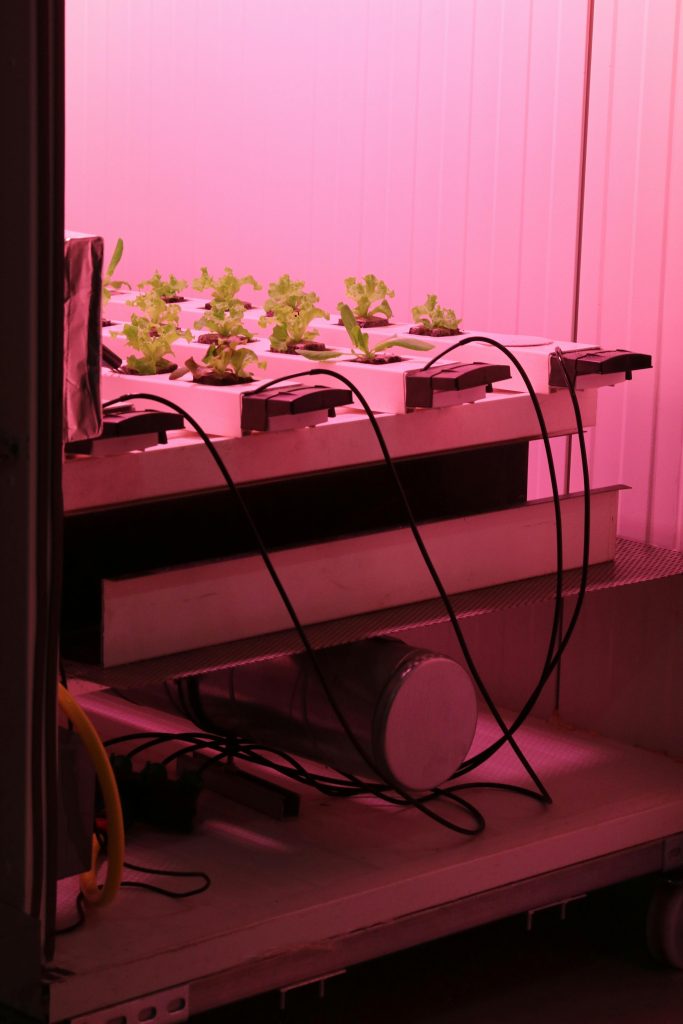
Root-related Issues
Root rot
Root rot is a prevalent problem in hydroponic gardening that occurs when the roots become infected with pathogenic fungi or when oxygen levels in the root zone are insufficient. Signs of root rot include browning, slime, and unpleasant odor emanating from the roots. To prevent root rot, ensure proper oxygenation of the root zone through adequate water and air circulation. Implement proper irrigation practices and avoid overwatering or waterlogging the grow medium. In cases where root rot is detected, remove and dispose of infected plants and roots, and consider treating the remaining plants with beneficial microbes or hydrogen peroxide to combat the fungal infection.
Root diseases
In addition to root rot, other root diseases can also affect hydroponic plants. These include pythium, fusarium, and pectobacterium, among others. These diseases are often caused by poor hygiene, inadequate system disinfection, or using infected plant materials. To prevent root diseases, it is important to maintain clean growing environments, regularly inspect plants for signs of disease, discard any infected plants, and use preventive measures like treating the system with beneficial microorganisms or employing disease-resistant plant varieties.
Root nutrient deficiencies
Hydroponic plants are highly dependent on a nutrient-rich solution for their growth and development. Nutrient deficiencies can occur when plants do not receive sufficient amounts of essential nutrients. Common nutrient deficiencies in hydroponic gardening include deficiencies in nitrogen, phosphorus, potassium, calcium, and iron. To combat nutrient deficiencies, it is important to monitor the nutrient solution’s pH and EC levels regularly, and adjust the nutrient composition accordingly. Additionally, make sure to provide the appropriate concentration of nutrients required for the specific plants being grown to avoid any nutrient imbalances.
Lighting Problems
Insufficient light intensity
Proper lighting is crucial for the photosynthesis process and overall plant growth in hydroponic systems. Insufficient light intensity can result in weak and leggy plants, reduced flowering or fruiting, and poor overall plant development. To ensure sufficient light intensity, invest in high-quality grow lights that provide the appropriate light spectrum and intensity for the specific plant species being grown. Measure the light intensity using a lux meter or a light meter and adjust the distance between the lights and plants accordingly to achieve the optimal lighting conditions.
Improper light spectrum
Light spectrum is another critical factor in hydroponic gardening. Different plant species have specific light spectrum requirements for optimal growth. Lack of the right light spectrum can lead to poor photosynthesis, elongated stems, and overall weak plants. Utilize grow lights that emit a spectrum suitable for your plants, including both the necessary blue and red light wavelengths. Consider using full-spectrum LED grow lights or combining different types of grow lights to provide a diverse and balanced light spectrum that meets your plants’ needs.
Light distance from plants
The distance between the grow lights and plants is crucial for ensuring optimal light absorption and preventing light burn. If the lights are too close to the plants, they can cause heat stress and light burn, leading to leaf discoloration and plant damage. Conversely, if the lights are too far away, the plants may receive insufficient light intensity, resulting in weak growth. It is important to follow the manufacturer’s guidelines and recommendations for each type of grow light used, as different lights have specific recommended distances. Regularly monitor plant growth and leaf color to determine if the lights need to be adjusted closer or further away from the plants.

Air Circulation and Ventilation
Poor air circulation
Proper air circulation is essential for maintaining a healthy growing environment in hydroponic systems. Poor air circulation can lead to stagnant air, high humidity, and increased risk of mold, pathogens, and pest infestations. To improve air circulation, strategically place fans or ventilation systems to promote air movement within the growing area. This will help prevent the buildup of excess moisture, regulate temperature, strengthen plant stems, and deter the growth of mold or pests. Regularly inspect the system for any areas with poor air circulation and make adjustments as necessary.
Lack of fresh air exchange
In addition to air circulation within the growing area, ensuring a regular exchange of fresh air is crucial. Plants require a constant supply of fresh air containing carbon dioxide (CO2) for photosynthesis. Stagnant air can result in reduced CO2 levels and hinder the plant’s ability to photosynthesize effectively. To facilitate fresh air exchange, consider using intake fans or vents to bring in fresh air from the outside and exhaust fans to remove stale air from the growing area. This will help maintain optimal CO2 levels and create a healthier and more productive environment for your plants.
Grow Medium Selection and Management
Incorrect grow medium choice
The choice of grow medium in hydroponic gardening is crucial for providing support to the plant roots and ensuring proper aeration and nutrient availability. Using an incorrect grow medium can hinder root development and impact plant growth. Different plants have different preferences for grow medium, ranging from rockwool and coco coir to perlite and vermiculite. Research the specific requirements of your chosen plants and select a suitable grow medium accordingly. It is also important to properly prepare and condition the grow medium before use to ensure optimal performance.
Improper aeration
Adequate aeration of the grow medium is vital to supplying oxygen to the plant roots and preventing issues such as root rot or suffocation. Improper aeration can lead to oxygen-deprived roots, nutrient imbalances, and poor plant health. Choose a grow medium that provides good drainage and aeration, allowing the roots to breathe. Ensure that the appropriate ratio of water to air is maintained in the grow medium to promote a healthy root environment. Regularly monitor and adjust watering practices to prevent waterlogged conditions and maintain proper aeration levels in the root zone.
Grow medium maintenance
Regular maintenance of the grow medium is essential for the health and longevity of your hydroponic system. Over time, the grow medium can accumulate salts, minerals, and debris that can interfere with nutrient absorption or create a hospitable environment for pests or diseases. Periodically flush the system with clean water to remove any accumulated residues and prevent nutrient imbalances. Additionally, consider replacing or refreshing the grow medium if it becomes excessively compacted or shows signs of deterioration. Proper grow medium maintenance will help ensure optimal root health and facilitate robust plant growth.
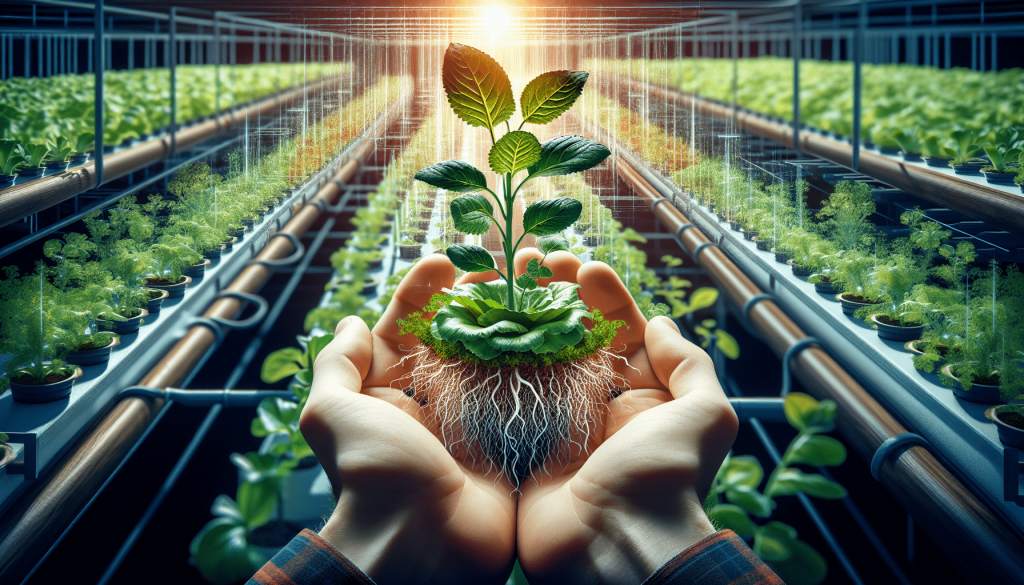
System Maintenance Issues
Clogged irrigation lines
Clogged or blocked irrigation lines can disrupt the nutrient flow to the plants, resulting in uneven watering, nutrient imbalances, or plant stress. It is important to regularly inspect the irrigation lines for any blockages or debris buildup. Disassemble and clean the irrigation system components as needed, ensuring that the lines are clear and free of obstructions. Proper maintenance and cleaning of the irrigation system will help maintain consistent nutrient delivery and promote healthy plant growth.
Malfunctioning water pump
The water pump is a critical component of a hydroponic system, responsible for supplying water and nutrients to the plants. A malfunctioning water pump can disrupt the nutrient circulation and result in inadequate watering of the plants. Regularly check the water pump for any signs of malfunction or reduced performance. Periodically clean the pump, remove any debris, and ensure proper lubrication to prevent any issues. If the water pump fails, promptly replace it to avoid any disruptions in nutrient delivery and to ensure the well-being of your plants.
Inaccurate pH and EC measurement
Accurate measurement and monitoring of pH and EC levels in the hydroponic system is necessary to ensure the appropriate nutrient balance and overall plant health. Inaccurate pH or EC measurement can lead to nutrient imbalances, root problems, and suboptimal plant growth. Use reliable and calibrated measuring instruments such as pH meters and EC meters to regularly test the nutrient solution. Calibrate the meters as recommended by the manufacturer to maintain accuracy. Promptly adjust the pH and EC levels as needed to ensure that the growing conditions are optimal for your plants.
Lack of Knowledge and Experience
Insufficient understanding of hydroponic principles
Lack of knowledge and understanding of hydroponic principles can greatly hinder successful gardening. Hydroponic systems require specific care and management techniques that differ from traditional soil-based gardening. The absence of a solid understanding of essential principles such as nutrient management, pH control, water quality, and plant requirements can result in a range of issues. Educate yourself on the fundamental concepts of hydroponic gardening by reading books, attending workshops, or seeking guidance from experienced hydroponic gardeners. Bolstering your knowledge will enable you to address challenges effectively and cultivate thriving plants.
Limited knowledge of plant requirements
Each plant species has unique requirements for light, temperature, humidity, nutrients, and water. A limited understanding of these plant requirements can lead to inadequate care and poor growth. It is important to research and familiarize yourself with the specific needs of the plants you are growing in your hydroponic system. Consider factors such as the plant’s ideal pH range, nutrient composition, light requirements, and suitable temperature and humidity levels. By tailoring your approach to meet the specific needs of your plants, you can ensure their success and enjoy a thriving hydroponic garden.
In conclusion, hydroponic gardening offers a highly efficient and innovative way to cultivate plants, but it does come with its own set of challenges. By being aware of and addressing common problems such as nutrient issues, water-related problems, temperature and humidity challenges, pest and disease management, root-related issues, lighting problems, air circulation and ventilation, grow medium selection and management, system maintenance issues, and lack of knowledge and experience, you can overcome these obstacles and create a healthy and productive hydroponic garden. Remember to stay proactive, educate yourself about your plant’s needs, and consistently monitor and adjust the conditions to ensure optimal growth and success in your hydroponic endeavors. Happy gardening!
